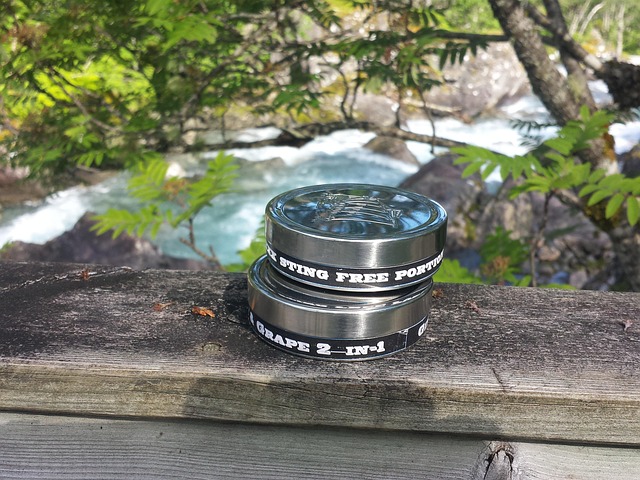Understanding wrinkles' causes, from sun exposure and collagen loss to dynamic and static types, empowers individuals to take control of their skin health. Traditional skincare methods like retinol and peptides remain popular, but advancements in science offer alternative procedures such as chemical peels, microdermabrasion, and laser therapy. Emerging technologies, including AI, focus on personalized treatments for diverse skin types, aiming for smoother complexions. Advanced treatments stimulate collagen production, repair elastic fibers, and protect the skin from environmental damage. At-home routines, combined with professional in-clinic procedures like Botox and fillers, ensure consistency and long-lasting results. Safety is paramount, with potential side effects varying by treatment; consulting dermatologists ensures informed decisions. The future of wrinkle reduction promises personalization and innovation through stem cell therapy, AI analysis, and non-invasive tech.
Advanced wrinkle reduction has evolved significantly, offering a multitude of options for achieving youthful skin. Understanding the causes and types of wrinkles is the first step towards effective treatment. From traditional methods like retinol and chemical peels to emerging technologies such as platelet-rich plasma (PRP) and laser therapy, this article explores the full spectrum of wrinkle combat. We delve into the science behind advanced treatments, provide practical tips for topical creams and in-clinic procedures, and guide you through at-home care routines. Safety and side effects are also addressed, along with a glimpse into future trends in anti-aging skincare.
Understanding Wrinkles: Causes and Types

Wrinkles are a natural part of aging, but understanding their causes and types can empower individuals to take proactive measures for effective wrinkle reduction. These signs of aging can be categorized into several types, each with its unique characteristics and contributing factors. The most common are fine lines and wrinkles caused by repetitive muscle movements, sun exposure, and loss of collagen and elastin. Dynamic wrinkles appear when we make facial expressions and disappear when we relax, while static wrinkles are permanent changes in the skin’s structure.
Environmental factors play a significant role in wrinkle formation. Prolonged sun exposure, for instance, leads to photoaging, resulting in fine lines, coarse wrinkles, and age spots. Smoking and certain genetic predispositions can also accelerate wrinkle development. By recognizing these causes, individuals can adopt strategies aimed at wrinkle reduction, such as implementing sun protection measures, adopting a healthy lifestyle, and exploring advanced skincare treatments.
Traditional Methods of Wrinkle Reduction

For centuries, humans have sought ways to combat the natural signs of aging, and wrinkle reduction has been a prominent focus in skincare routines worldwide. Traditional methods often relied on topical creams containing ingredients like retinol, hydroxy acids, and peptides, which stimulate collagen production and improve skin texture. These products are still widely used today due to their effectiveness in smoothing fine lines and wrinkles. However, with advancements in cosmetic science, many individuals are now exploring alternative and more advanced approaches to achieving youthful-looking skin.
Beyond typical at-home skincare, medical procedures have emerged as powerful tools for wrinkle reduction. Techniques such as chemical peels, microdermabrasion, and laser therapy offer deeper treatments by targeting specific skin layers, encouraging cell turnover, and minimizing the appearance of wrinkles. Each method has its advantages and is tailored to different skin types and concerns, providing individuals with a range of options to choose from when pursuing a smoother, more radiant complexion.
Emerging Technologies in Skin Rejuvenation

The realm of skin rejuvenation is constantly evolving, with emerging technologies offering promising solutions for effective wrinkle reduction. One such innovation is the use of advanced laser treatments, which have revolutionized the way we address fine lines and age-related skin changes. These high-precision lasers stimulate collagen production and target specific skin concerns, providing noticeable improvements in texture and elasticity. For instance, fractional lasers work by creating micro-lesions, triggering the body’s natural healing process and encouraging the growth of new, healthy skin cells.
Another game-changer is the integration of artificial intelligence (AI) and machine learning algorithms in dermatological practices. AI-driven systems can analyze vast amounts of data to personalize treatment plans, ensuring tailored solutions for individual skin types and concerns. This precision medicine approach optimizes results, minimizes side effects, and enhances overall patient satisfaction. Additionally, innovative technologies like radiofrequency (RF) devices and ultrasound treatments offer non-invasive alternatives, providing deep penetration to lift and firm the skin without incisions or prolonged recovery periods.
The Science Behind Advanced Wrinkle Treatments

The science behind advanced wrinkle reduction treatments has evolved significantly, leveraging cutting-edge technologies and a deep understanding of skin biology. These innovative solutions go beyond traditional methods by targeting not just the surface but also the deeper layers of the skin. Through mechanisms such as collagen stimulation, elastic fiber repair, and hydration enhancement, these treatments work to reverse signs of aging.
Advanced techniques like peptide technology, growth factor stimulators, and fractional laser therapy are now widely recognized for their effectiveness in smoothing fine lines and wrinkles. These methods stimulate the production of youthful proteins, encourage cell turnover, and promote skin regeneration, leading to a more rejuvenated and radiant complexion. The result is not just temporary; many advanced treatments offer long-lasting effects, providing users with a clearer, smoother, and more youthful appearance.
Topical Creams and Serums for Effective Wrinkle Combat

When it comes to advanced wrinkle reduction, topical creams and serums play a pivotal role in combating signs of aging effectively. These formulations are designed to penetrate deeper into the skin, offering a targeted approach to wrinkles, fine lines, and age spots. Key ingredients such as retinol, peptides, and antioxidants are often found in these products, each contributing unique benefits to skin rejuvenation.
Retinol, for instance, is a form of vitamin A that stimulates cell turnover, encouraging the production of collagen and elastin—proteins essential for maintaining skin firmness and elasticity. Peptides, on the other hand, mimic the structure of natural skin proteins, helping to fill in wrinkles from within. Antioxidants like vitamin C and E protect the skin from environmental damage caused by free radicals, further supporting wrinkle reduction efforts.
In-Clinic Procedures: What to Expect

In-clinic procedures for wrinkle reduction have come a long way, offering advanced treatments that can transform your skin’s appearance. When visiting a dermatology clinic or skincare facility, you’ll be greeted by professionals who prioritize your comfort and safety. The process typically begins with a thorough consultation to understand your skin concerns and medical history. Depending on the severity of wrinkles and individual needs, various techniques may be employed. Common in-clinic treatments include chemical peels, microdermabrasion, and injectables like Botox or filler injections.
During these procedures, specialized tools and substances are used to target specific areas of concern. Chemical peels involve applying chemicals to exfoliate the skin, reducing fine lines and improving texture. Microdermabrasion, on the other hand, uses a mechanical device to gently sand away the outer layer of skin, revealing smoother, younger-looking skin beneath. Injectables work by temporarily paralyzing or plumping up specific muscles, minimizing the appearance of wrinkles at the surface. Each procedure has its own set of benefits and recovery times, ensuring that patients can expect noticeable improvements in their wrinkle reduction journey.
At-Home Care Routines for Long-Lasting Results

Establishing a consistent at-home care routine is key to achieving and maintaining long-lasting wrinkle reduction results. Daily cleansing, toning, and moisturizing are essential steps that help prepare the skin for other treatments. Using gentle, yet effective products formulated with ingredients like hyaluronic acid, retinol, or vitamin C can significantly enhance your skincare regimen’s effectiveness in combating signs of aging.
Remember that consistency is crucial; maintaining a routine ensures that your skin receives the care it needs consistently. Additionally, protective measures like wearing sunscreen daily are vital to preventing further wrinkle development and maintaining the health and youthfulness of your skin.
Safety and Side Effects: What You Need to Know

When exploring advanced wrinkle reduction methods, safety should be your top priority. Many treatments promise dramatic results, but it’s crucial to understand potential side effects before proceeding. Topical creams and serums, while often non-invasive, may cause irritation, redness, or allergic reactions in sensitive skin. More intensive procedures like injections or laser therapies carry additional risks, including temporary swelling, bruising, and, in rare cases, longer-term complications.
It’s essential to consult with a qualified dermatologist who can assess your skin type, medical history, and specific wrinkle concerns. They will guide you on the safest and most effective treatments, ensuring that any procedures are tailored to your needs. Always seek professional advice before embarking on a wrinkle reduction journey to avoid unpleasant surprises and ensure positive outcomes.
Future Trends in Anti-Aging Skin Care

The future of anti-aging skincare is poised for significant advancements, with a focus on personalized and innovative solutions for wrinkle reduction. Emerging technologies like stem cell therapy and plasmin-based treatments hold promise in regenerating skin cells and enhancing collagen production, offering potential game-changers in the battle against aging. Additionally, artificial intelligence (AI) is expected to play a pivotal role by analyzing individual skin structures and genetic profiles to create tailored skincare routines. This precision approach ensures that products are not just effective but also safe for each user’s unique needs.
Beyond traditional ingredients, there’s a growing interest in non-invasive procedures that utilize light therapy and ultrasound technology for targeted wrinkle treatment. These methods offer minimal downtime and discomfort compared to surgical options, making them increasingly popular. Moreover, the integration of advanced materials in skincare formulations could lead to innovative delivery systems, enhancing the penetration of active ingredients for more potent wrinkle reduction results.
